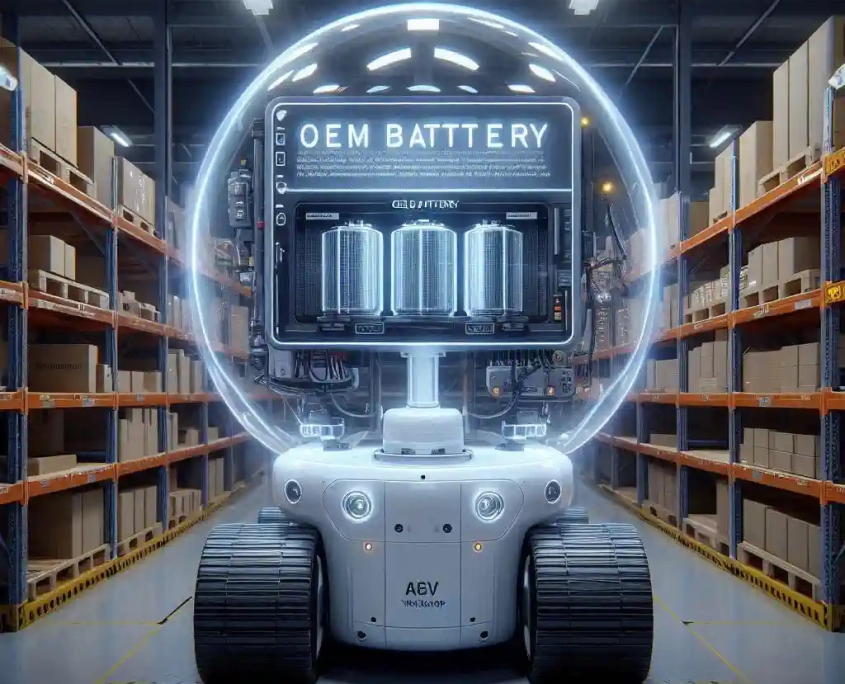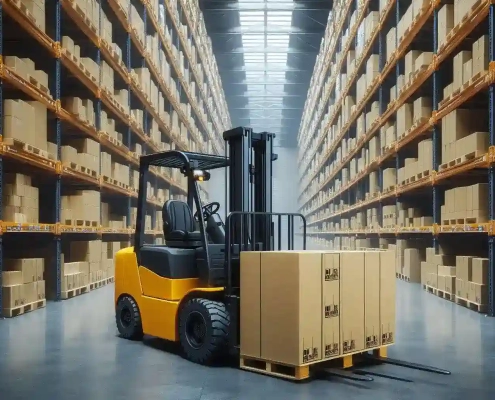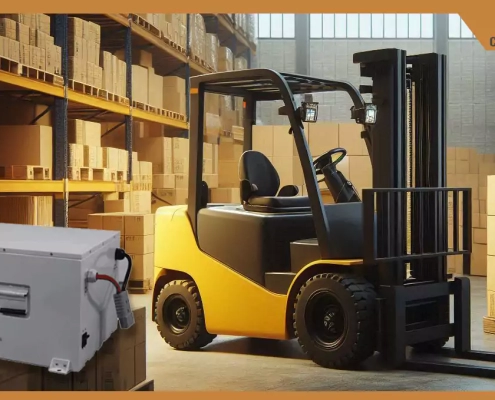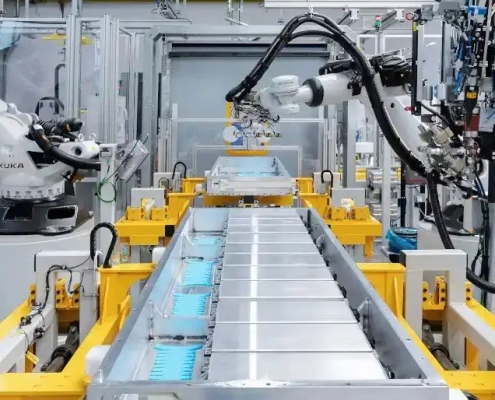OEM vs ODM vs OBM: Battery Industry Insights
Table of Contents
The battery industry is a dynamic field that benefits from various manufacturing models. Understanding the differences between OEM, ODM, and OBM is crucial for companies looking to optimize their production and market strategies. OEM (Original Equipment Manufacturer) and ODM (Original Design Manufacturer) offer distinct advantages for businesses focused on manufacturing and design, while OBM (Original Brand Manufacturer) allows companies to create and sell their products under their own brand. This article explores how these models work within the battery industry, with a specific focus on lead-acid, lithium, and lithium iron phosphate batteries.
What is OEM in the Battery Industry?
Definition of Original Equipment Manufacturer (OEM)
An Original Equipment Manufacturer (OEM) is a company that produces parts and products that are then marketed and sold by another company. In the battery industry, an OEM manufactures batteries or battery components based on the design and specifications provided by another company. This process allows companies to offer high-quality products without needing to invest in their own manufacturing facilities.
How OEM Works in the Battery Industry
The battery industry relies heavily on OEM for various types of batteries, including lead-acid, lithium, and lithium iron phosphate batteries. Here’s how the OEM process works in this industry:
- Design and Specification: The process begins when a company needing batteries provides detailed specifications and design requirements to the OEM. This includes the type of battery (e.g., lead-acid, lithium, or lithium iron phosphate), capacity, dimensions, and performance characteristics. For example, a company might specify that they need a lithium battery with a particular energy density and cycle life.
- Manufacturing: The OEM uses its manufacturing facilities to produce the batteries according to the provided specifications. This involves sourcing raw materials, assembling battery cells, and ensuring the final product meets quality standards. The manufacturing process must adhere to strict safety protocols, especially for high-energy batteries like lithium iron phosphate batteries.
- Quality Control: Since the branded company will be selling these batteries under its name, rigorous quality control processes are essential. The OEM conducts various tests to ensure the batteries meet safety and performance standards. For instance, the lithium battery fire temperature must be carefully regulated to prevent hazards.
- Branding and Packaging: Once the batteries are manufactured and pass quality checks, they are branded with the company’s logo and packaged according to their guidelines. This step is critical for maintaining brand consistency and customer trust. Companies rely on the OEM to deliver products that reflect their brand’s quality and reliability.
- Distribution: The branded batteries are then distributed through the company’s sales channels, whether that’s direct to consumers, through retailers, or via B2B sales. By using an OEM, companies can bring products to market more quickly and efficiently.
Case Study Example: In 2021, a well-known electric vehicle company partnered with a leading OEM to produce a new line of lithium iron phosphate batteries. The OEM was responsible for manufacturing the batteries to the carmaker’s precise specifications, ensuring high performance and safety. This collaboration allowed the carmaker to focus on vehicle design and marketing while leveraging the OEM’s expertise in battery production.
Using OEM allows companies to bring high-quality batteries to market without the need for large-scale manufacturing investments. It also enables them to adapt quickly to market demands and technological advancements. For example, a company specializing in marketing and selling lithium iron phosphate batteries can leverage an OEM for the complex and costly manufacturing process, ensuring they remain competitive and responsive to customer needs.
In the battery industry, OEM relationships can be long-term partnerships where both parties benefit from shared expertise and market reach. This collaboration enhances product offerings and drives innovation and efficiency in the industry. By relying on OEMs, companies can focus on their strengths, whether that’s in product design, marketing, or customer service, while ensuring they deliver high-quality, reliable batteries to the market.
What is ODM in the Battery Industry?
Definition of Original Design Manufacturer (ODM)
An Original Design Manufacturer (ODM) is a company that designs and manufactures a product based on another company’s specifications. In the battery industry, an ODM creates battery designs and produces them for other companies to brand and sell. This allows companies to bring innovative products to market without investing in the design and manufacturing processes themselves.
The Role of ODM in the Battery Industry
In the battery industry, ODM plays a crucial role in developing and producing advanced batteries such as lead-acid, lithium, and lithium iron phosphate batteries. Here’s how ODM works:
- Design and Development: The process begins with the ODM creating a design based on the functional requirements provided by the client company. This could include specifications like capacity, size, and energy density. For example, a company might need a new type of lithium battery with specific performance characteristics.
- Prototyping and Testing: The ODM develops prototypes and conducts thorough testing to ensure the batteries meet the required standards. This step includes safety tests, such as ensuring the lithium battery fire temperature is within safe limits.
- Manufacturing: After successful testing, the ODM manufactures the batteries at scale. They handle the entire production process, from sourcing materials to assembling the final product. This allows companies to offer high-quality batteries without managing the complexities of manufacturing.
- Branding and Distribution: The client company brands the batteries with their logo and distributes them through their sales channels. This collaboration allows the client to focus on marketing and sales while relying on the ODM for product innovation and manufacturing efficiency.
OEM vs. ODM: Key Differences in the Battery Industry
Comparison Between OEM and ODM in the Battery Industry
In the battery industry, both OEM and ODM play important roles, but they serve different purposes. An Original Equipment Manufacturer (OEM) produces batteries based on the design and specifications provided by another company. The OEM focuses on manufacturing and ensures that the product meets the required standards. The branding and marketing are handled by the company that orders the batteries.
On the other hand, an Original Design Manufacturer (ODM) not only manufactures but also designs the batteries. The ODM develops the product from the ground up, based on the functional requirements given by the client. This means the ODM is responsible for both the innovation and production of the battery.
For example, if a company needs a specific type of lithium battery, an OEM would manufacture it according to the provided design, while an ODM would create the design and then produce the battery. The choice between OEM and ODM depends on the company’s needs and capabilities.
When to Choose OEM vs. ODM
Choosing between OEM and ODM depends on several factors:
- Design Capability: If a company has a strong design team and knows exactly what type of battery they need, working with an OEM can be beneficial. The company can focus on innovation while the OEM handles manufacturing. This approach is cost-effective and allows for quicker production times.
- Innovation Needs: Companies that lack in-house design capabilities but want to bring innovative products to market might prefer an ODM. The ODM will take care of both the design and manufacturing processes. This is ideal for companies looking to introduce new battery technologies without investing in a design team.
- Speed to Market: OEMs can usually produce batteries faster since they only focus on manufacturing. This is beneficial for companies that need to meet tight deadlines. ODMs, while taking longer due to the design phase, can offer more customized solutions.
- Cost Considerations: Working with an OEM might be less expensive since the company only pays for manufacturing. However, an ODM can be a more comprehensive solution, potentially saving costs in the long run by handling both design and production.
The Rise of OBM in the Battery Industry
Introduction to Original Brand Manufacturer
An Original Brand Manufacturer (OBM) is a company that produces products under its own brand name, handling all aspects of the product lifecycle from design and manufacturing to marketing and sales. In the battery industry, an OBM develops and sells batteries, such as lead-acid, lithium, and lithium iron phosphate batteries, under its own brand. This model allows companies to establish and promote their brand identity in the market.
How OBM Differs from OEM and ODM
OBM differs significantly from OEM and ODM in several ways. An OEM manufactures products based on another company’s design and specifications. The products are then branded and sold by that other company. For example, an OEM might produce a lithium battery for a well-known electronics brand, but the battery itself will not carry the OEM’s name.
An ODM, on the other hand, not only manufactures but also designs the product based on the client’s requirements. The client company then brands and sells the product. In contrast, an OBM takes full responsibility for the entire process, from designing the battery to marketing and selling it under its own brand.
The Impact of OBM on the Battery Industry
The rise of OBM has a significant impact on the battery industry. By managing the entire product lifecycle, OBM companies can maintain higher control over quality and innovation. This control allows them to introduce new and improved battery technologies more efficiently. For instance, an OBM specializing in lithium iron phosphate batteries can quickly adapt to market demands and innovate in ways that might be slower for an OEM or ODM reliant on client specifications.
Moreover, OBMs benefit from stronger brand recognition. When customers see a consistent brand associated with high-quality batteries, it builds trust and loyalty. This is particularly important in industries like electric vehicles and renewable energy, where battery performance and reliability are critical.
MANLY Battery: Combination of ODM, OEM, OBM
MANLY Battery: A Versatile Leader
MANLY Battery is a prime example of a company that seamlessly integrates ODM, OEM, and OBM models in its operations. As a premier wholesale battery producer in China, MANLY Battery has built a solid reputation over 13 years by blending these manufacturing strategies to meet diverse market needs.
ODM (Original Design Manufacturer)
As an ODM, MANLY Battery excels in creating customized battery solutions. Clients can rely on MANLY to design and produce unique battery products tailored to specific applications. This includes everything from solar energy storage to advanced robots for military use. The company’s extensive customization capabilities cover voltage, capacity, and aesthetics, ensuring that each battery aligns perfectly with client specifications.
OEM (Original Equipment Manufacturer)
In the OEM role, MANLY Battery manufactures batteries according to the design and specifications provided by other companies. This model is particularly beneficial for businesses looking to maintain control over their product design while outsourcing the manufacturing process. MANLY’s high production capacity, producing over 6MWh of battery cells and packs daily, ensures that they can meet large-scale demands without compromising quality.
OBM (Original Brand Manufacturer)
As an OBM, MANLY Battery markets and sells batteries under its own brand. This approach allows the company to establish a strong market presence and build brand recognition. MANLY’s branded batteries are known for their reliability and advanced features, such as Bluetooth connectivity and intuitive battery level displays. The company’s commitment to quality is evident in its decade-long warranty and global certifications like UN38.3, IEC62133, UL, and CE.
Case Example: In 2023, MANLY Battery launched a new line of LiFePO4 batteries under its brand, targeting the residential and industrial energy storage markets. These batteries, designed to operate efficiently between -20°C to 75°C (-4°F to 167°F), showcased MANLY’s ability to innovate and adapt to market demands.
Impact on the Battery Industry
By combining ODM, OEM, and OBM models, MANLY Battery sets a benchmark for versatility and innovation in the battery industry. This strategic approach allows them to cater to a wide range of customer needs, from custom designs to branded products. It also drives continuous improvement and technological advancements, benefiting the entire industry.
Conclusion
In the battery industry, the choice between OEM, ODM, and OBM models depends on a company’s capabilities and goals. OEM and ODM provide essential manufacturing and design services that enable companies to bring high-quality batteries to market without extensive investments in production facilities. OBM, on the other hand, allows companies to build strong brand identities and maintain control over the entire product lifecycle. Companies like MANLY Battery demonstrate the effectiveness of integrating all three models, offering tailored solutions and driving innovation in the industry. By leveraging these strategies, businesses can enhance their product offerings, improve efficiency, and stay competitive in a rapidly evolving market.






